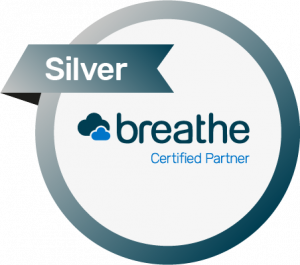Employers need to take a wide range of factors into account when they are reviewing why employees want to come to work for them, and stay, and guess what? It’s not just about salary!
Here we take a look at four key drivers of employee engagement, which are particularly important because of the challenging recruitment market we find ourselves in. Here are some fundamental basics that you need to get right to help you recruit and retain the talent you need in 2022.
1.Look at how you recognise and value your employees
Recognising employees for doing a great job or something an employee has done that maybe isn’t part of their normal day to day work is key as it makes employees feel valued and that the work they are doing is important, and this needn’t be expensive to do!
You may want to introduce a recognition scheme, which formalises the act of recognition through a centrally managed and controlled process, often with nominations either form managers, employees or both and different types of awards such as employee of the month or recognising employees who have demonstrated your Values.
The approach that you take as a business should be driven by your values and what you are trying to achieve as a business. As with any other initiative, simply introducing a recognition scheme is unlikely to have much impact unless it fits with your culture. Understanding what success will look like from the start will help you focus on the design and the measurement of the impact and success of the programme. For example, success could be as simple as increased productivity or a reduction in absenteeism.
Make sure you tell people about recognition schemes you have in place either on your careers page, or your Instagram account, or LinkedIn pages. Promoting the fact that you recognise and reward your staff is a key strategy when trying to attract great talent to work for you.
2.Review your Employer Brand
Your Employer Brand is the story (but I do mean Non- Fiction!) that you tell the world about what its like to work for you. It’s your “sales pitch” to prospective candidates about way they would want to work for you. Stories stick, so tell them about why you started the business and your Purpose or your “why” as this is often something people can really connect with. Have you created your values yet? If not, do! Employees are much more discerning these days and they want to work for Purpose driven businesses who has Values that are similar to their own.
With good candidates often having more than one offer on the table, a company with a clear purpose and values that align with theirs, could be what makes the difference between choosing to work for you, over one of your competitors.
Your Employer Brand needs to be consistent on your website and all other Social Media Platforms. Your website careers page could include employee stories, and even better, videos about why they joined your business, when they joined and how they have developed their career with you, as well as all the usual stuff about perks and benefits, but it’s the stories that stick!
3.Check your benefits package is competitive
Employees tend to look to their employer as the primary source of benefit provision and therefore benefits will form another key component of your compensation or total reward package that ill again help you to attract the best people to work for you, but more importantly, having a competitive overall compensation package will be something that encourages people to stay. However, don’t mistake this as the only reason people will join you or stay.
The greater the range and mix of company funded benefits, the greater the likely appeal will be. As with pay, it is important for the organisation to benchmark the type and level of benefits provided compared with your competitors, bearing in mind that benefit provision tends to vary greatly between different organisations and by sector. Depending on the age of your employees, certain benefits may also be appealing to different demographics too.
A common approach to reviewing your benefits would be to group them as below and look at what will be important and valued by your team;
Health and Welfare – Medical insurance, long-term disability plans, life cover, health screening, employee assistance programmes, mental health support
Retirement – Pensions and retirement savings
Travel – Company cars, travel allowances, bikes for work and season ticket loans
Lifestyle – Holiday, childcare, financial advice, and choice and voluntary plan
Gone are the days when you had to be a big corporate to be able to offer a great range of benefits, as there are a number of benefit and perks online platforms now that provide a great range of benefits to SME’s such as;
4.Consider your total reward offering
Total reward extends the definition of the rewards of employment beyond remuneration or compensation and benefits alone, into a more encompassing expression of the factors that cause employees to join, stay with you and deliver high performance.
The total reward concept embraces tangible rewards of base and variable pay and benefits alongside the more intangible aspects of the working environment, such as personal growth and development, career progression and defining of career paths, the value added through learning and development, as well as the sense of engagement that is created through identification with the organisation’s culture and values. Again, you could look at this simply as Compensation, Benefits, Work-Life balance, Work Environment, Career and Personal Development.
It can sometimes be difficult for employees to balance their work and personal commitments so making sure your employees are able to make the most of their time away from work, as well as maximising the time with their employer, has rightly gained importance during the Covid Pandemic. Employers that wish to demonstrate a commitment to helping employees to achieve a healthy balance between work and personal life can affect these changes through their working practices and benefits packages.
Examples that can be built into the benefits package include offering flexibility around the buying/selling of annual leave, arrangements for paid bereavement leave, providing access to tax-efficient childcare vouchers to help pay for the care of their family, and the provision of occupational sick pay that enables employees to take the time off they need when unwell. Many employers also facilitate employees giving something back to the community, through both paid charity/volunteering days and via a payroll giving or give-as-you-earn (GAYE) scheme
Offering rates of pay that are out of line with those available for similar roles elsewhere either in your geographical area or industry sector can lead to your business either being unable to recruit and retain staff or paying over the odds to the detriment of the bottom line.
Adopting a total reward approach recognises that people are motivated by more than just money. Alongside compensation, organisations should also look at the benefits, work environment and career and development opportunities that they are able to offer to potential and current employees. Organisations should benchmark both guaranteed pay (annual base salary) and variable pay (actual earned) against the market rate.
To achieve this, a salary benchmarking activity needs to take place. Using reward data services with a statistically significant sample size will add credibility to the benchmarking results. Understanding the organisation’s current salary and benefits offering relative to the market is an essential building block of reward and budget planning. Therefore, benchmarking in a manner that provides you with the lower quartile, median and upper quartile of the defined salaries for specific roles, provides invaluable data to inform the organisation’s pay philosophy or annual salary review decisions. In particular, such findings will help the organisation decide how to present base and variable pay relative to the other elements of their reward offering.
How can we help you if you are struggling to retain people?
If you are an ambitious SME, Business Owner, Hiring Manager or HR professional, who are looking to grow your business this year, then having a sound employee retention strategy is absolutely critical as it’s no good you taking the time and effort to recruit great people if your best employees are walking out the door!
If you’d like to get some top tips on creating your employee retention strategy, then come along to our next Zoominar on Friday April 8th from 9:30am – 11am – Creating your Employee Retention Strategy. In our workshop, we will share the best actionable employee retention strategies that will help you to reduce employee turnover and retain the talent you need to run your business. Book your place here.
Or if you want to book a call with us, we would be happy to have a no obligation chat to see if we could work with you to create an Employee Engagement Strategy that works! Book your call here.





















